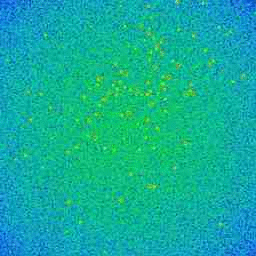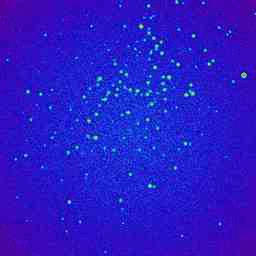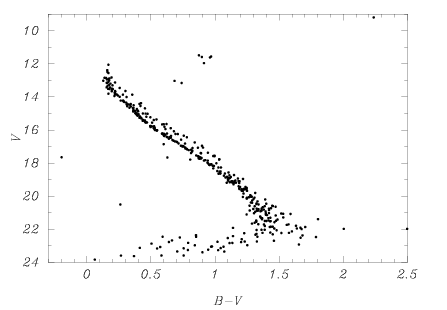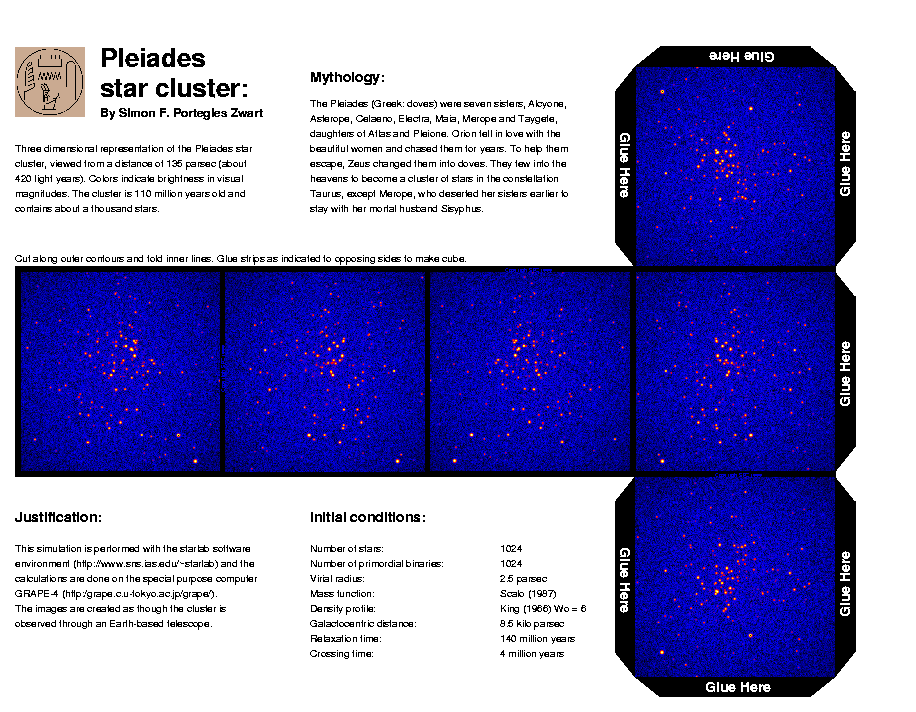

Two images in B (left) and V (right) filters
of a simulated Hyades-like star cluster. The CCD images
are 'taken' with a 1.5 meter telescope on a 512x512 CCD.
are 'taken' with a 1.5 meter telescope on a 512x512 CCD.

constructed from the above presented CCD
images of the simulated Hyades star cluster.
The data analysis was performed by Ata Sarajedini

